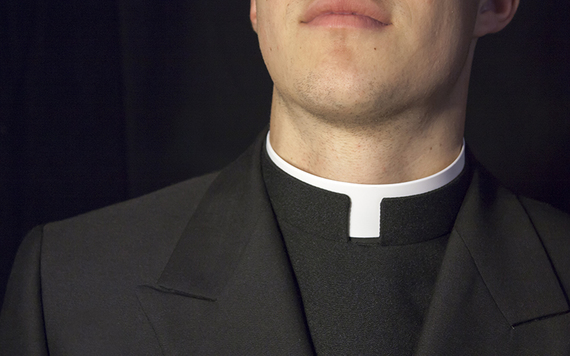Henry James O'Farrell is a name largely unknown in today's world but 150 years ago his name was trending for all the wrong reasons when he carried out an assassination attempt on a member of the British Royal family.
O'Farrell was born in 1833 at Arran Quay, Dublin City. His father was a butcher who decided to take his young family to Australia for a better life of prosperity.
O'Farrell was just 8 years old when he arrived in the Land Down Under with his family. His father became a land agent in Ballarat and the family did prosper but young Henry O'Farrell was destined to follow a dark path in his life.
O'Farrell wanted to join the priesthood but he was knocked back by the archbishop James Gould who refused to have him ordained due to his off-kilter views against the Catholic hierarchy. O'Farrell's failure to become a man of the cloth opened the door to his self-destruction.
O'Farrell's brother Peter had become a solicitor in Melbourne and for a brief time, he found employment with his solicitor sibling. His drinking increased, however, as his mental health declined and Peter found it impossible to keep his brother employed.
Read more: Jackie’s secret agent shares memories of JFK’s assassination

O'Farrell had first wanted to become a priest. Image: iStock.
O'Farrell then went back to Ballarat, where for a short time he sold fruit at the Haymarket there but this also proved to be a short stint of stability in an unstable life and he eventually took off to the outback to join his cousin, Joe Kennedy, in sheep farming.
Cousin Joe was a raging alcoholic and because O'Farrell also had a great lip for drinking, their partnership proved disastrous and their sheep farming venture failed miserably.
When money and booze dried up, Joe entered into severe stages of delirium tremors which killed him and O'Farrell headed back to Ballarat. In 1867 the police picked him up when he was waving two pistols on the street and preaching gibberish. He was packed off to an asylum.
After a year he was released and made his way to the seaside suburb of Clontarf just north of Sydney. Named after the Dublin suburb where Brian Boru dispatched the Danes in 1014, Australia's Clontarf was the venue for a charity event called the sailors' picnic which on March 12, 1868, hosted the Prince Alfred Duke of Edinburgh as its guest of honor.
The 23-year-old prince was the fourth child of Queen Victoria and was on a Royal visit to Australia. In the days before the sailors' picnic O'Farrell booked into the Currency Lass Hotel but his drunkenness resulted in his ejection from the establishment. He then went to the Clarendon Hotel from where he set out on the morning of March 12 to assassinate Queen Victoria's son.

He was the fourth child of Queen Victoria. Image: WikiCommons.
O'Farrell, by now aged 35, trudged his way through the large crowd that congregated around Prince Alfred at the sailors' picnic and he produced a pistol from his pocket and shot the royal. As the bullet struck his back, the Prince screamed out, "Good God, my back is broken!" O'Farrell decided to shoot again but his second bullet failed to hit the Prince. Instead, it lodged in the foot of bystander George Thornes who promptly fainted.
Read more: RFK's children believe there was a second assassin with Sirhan Sirhan
The crowd turned into a blood-lusting lynch mob and almost ripped O'Farrell from limb to limb. The police had a difficult task to retrieve the Dubliner from the angry mob and he had most of his clothes torn from his back. From tip to toe he was beaten to a pulp but the lawmen managed to successfully save O'Farrell for the gallows.
The Prince survived, as did Mr. Thornes. Prince Alfred spent two weeks recovering in the care of Australian nurses trained by Florence Nightingale.
O'Farrell claimed he shot the Prince on the orders of the Irish Republican Brotherhood but the Fenian movement strongly denied these claims. O'Farrell's trial began on March 30 and two days later, the judge handed down a sentence of death. Prince Alfred asked for clemency for O'Farrell on the grounds that he was insane but a royal plea could not save the Irishman's neck. On April 21, 1868, he was hanged in Darlington Gaol.
O'Farrell's remains were buried in the Catholic section of Rookwood Cemetery, where today a small brass plaque simply states his name but not the deed that put him in that grave.
At the scene of the attempted assassination, there is a tree marking the spot where it happened. There is also an illustrated plaque depicting the infamous event which took place there 150 years ago but perhaps the most enduring memorial to Henry O'Farrell's failed assassination, is the Royal Prince Alfred Hospital in Sydney.
After the attempt on his life, Prince Alfred decided the best way to thank those who cared for him would be to build a memorial in the form of a hospital. Today the Royal Prince Alfred hospital is the biggest hospital in New South Wales and the most advanced teaching hospital in Australia. So, I suppose you could say that at least some good did come from the mad actions of an Irishman in Australia 150 years ago!
Do you have an unlikely story about an Irish person living abroad? Let us know about it in the comments section, below.
This article was submitted to the IrishCentral contributors network by a member of the global Irish community. To become an IrishCentral contributor click here.




Comments